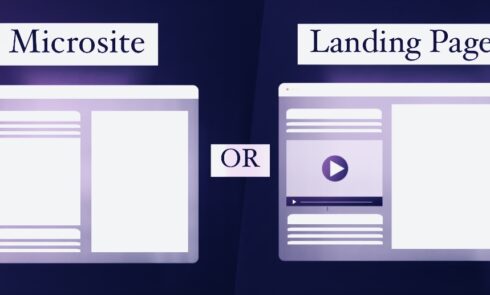In recent years, the landscape of digital storytelling has undergone a profound transformation, ushering in a new era marked by innovation, interactivity, and heightened audience engagement. This paradigm shift has been propelled by advancements in technology, the proliferation of digital platforms, and evolving consumer preferences. From static content to immersive multimedia experiences, digital storytelling has evolved to meet the demands of today’s dynamic and interconnected world.
What is the Digital Renaissance?
The emergence of no-code web creation tools, such as Vev, has democratized the process of content creation, empowering individuals and organizations to bring their creative visions to life without the need for extensive coding knowledge or resources. These tools offer customizable pre-coded elements and intuitive design interfaces, streamlining the creation process and reducing both time and cost barriers. As a result, the quality of digital content has skyrocketed, setting new standards for excellence and pushing the boundaries of creativity.
The Rise of Interactive Infographics: A New Frontier in Storytelling
Key Features:
- Dynamic Visual Narratives: Merges information with immersive design elements;
- Interactivity: Requires user engagement through scrolling, clicking, or hovering;
- Engagement: Transforms passive consumption into active participation;
- User Experience: Enhances connections and improves overall experience.
Benefits:
- Enhanced Engagement: Encourages active interaction, keeping users engaged longer;
- Deeper Connections: Fosters a more profound understanding and connection with the content;
- Improved Retention: Interactive elements help in better information retention;
- Versatility: Can be tailored to various topics and audiences.
At the forefront of this digital renaissance, interactive infographics stand out by transforming how we consume information. Unlike traditional static infographics, which only allow for passive viewing, interactive infographics demand user engagement, offering a more captivating and immersive experience. This shift from passive to active participation not only keeps audiences engaged but also enhances their connection to the content, making complex information more accessible and memorable. Through blending dynamic visual narratives with interactivity, these infographics represent a significant evolution in digital communication, promising a more engaging and enriching user experience.
What about Anatomy of Interactive Infographics?
Interactive infographics leverage a diverse array of multimedia elements, including animations, images, audio, and video, to convey information in compelling and memorable ways. Gone are the days of mundane clickbait articles and uninspired visuals; today’s interactive infographics are dynamic, engaging, and tailored to the preferences of modern audiences. By harnessing the power of storytelling, these infographics transform data into narratives, making complex information accessible and relatable to viewers.
Crafting Compelling Narratives: The Art of Visual Storytelling
Core Principles of Visual Storytelling:
- Immersive Narratives: Utilizes images, videos, and design elements for storytelling;
- “Show, Don’t Tell”: Emphasizes visual communication over textual explanations;
- Cross-Cultural Resonance: Transcends language barriers, appealing universally;
- Emotional Engagement: Evokes emotions for a deeper connection with the audience.
Benefits of Visual Storytelling in Interactive Infographics:
- Enhanced Comprehension: Visuals simplify complex information, making it easier to understand;
- Universal Appeal: Connects with a global audience beyond language limitations;
- Emotional Impact: Engages viewers emotionally, making content more memorable;
- Visual Immersion: Creates an immersive experience, encouraging longer engagement.
At the heart of interactive infographics lies the art of visual storytelling, a narrative technique that revolutionizes traditional storytelling methods. This approach leverages visual means—such as images, videos, and dynamic design elements—to convey messages and evoke emotions, adhering to the “show, don’t tell” philosophy. By doing so, interactive infographics captivate audiences, offering rich and compelling narratives that transcend language barriers and resonate on a deeper, more visceral level. The power of visual storytelling in interactive infographics lies in its ability to immerse audiences in stories, making complex information more accessible and engaging across diverse cultures and demographics. This technique not only enhances the viewer’s experience but also fosters emotional connections, ensuring that the message is not just seen, but felt and remembered.
How to Engage Audiences in a Multisensory Experience?
Interactive infographics offer a multisensory experience that engages audiences on multiple levels, appealing to both their intellect and their emotions. Through captivating animations, vibrant visuals, and interactive elements, these infographics transport viewers into immersive digital worlds where information comes to life before their eyes. By engaging multiple senses, interactive infographics create memorable and impactful experiences that leave a lasting impression on audiences long after they have finished consuming the content.
Harnessing the Potential of Data: From Information to Insight
At the core of interactive infographics lies data—the raw material from which compelling narratives are woven. By transforming data into visual stories, interactive infographics make complex information more accessible and comprehensible to audiences. Through interactive charts, graphs, and visualizations, viewers can explore data sets, uncover patterns, and gain valuable insights in an engaging and interactive manner. This fusion of data and storytelling empowers viewers to become active participants in the discovery process, fostering a deeper understanding of the underlying subject matter.
The Transformative Impact of Interactive Infographics
The transformative impact of interactive infographics extends far beyond mere information dissemination; it has the power to shape perceptions, inspire action, and drive meaningful change. By presenting information in a visually compelling and interactive format, interactive infographics break down barriers to understanding, making complex concepts more approachable and relatable to audiences. Whether it’s raising awareness about social issues, promoting environmental sustainability, or advocating for policy change, interactive infographics have the potential to spark conversations, drive engagement, and catalyze positive social impact.
What are Interactive Infographic Examples?
To illustrate the versatility and potential of interactive infographics, let’s explore a curated selection of exemplary examples from various industries and sectors:
ServiceNow: ‘The Sustainability Advantage’
This interactive infographic delves deep into the significance of environmental, social, and corporate governance frameworks, transforming traditionally dry content into a visually captivating and dynamic narrative. Utilizing a blend of animations, interactive charts, and vibrant animations, it not only educates but also engages the audience, making complex topics accessible and interesting. This approach facilitates a better understanding and appreciation of these crucial frameworks, encouraging more informed discussions and decisions.
United Nations Office on Drugs and Crime: Synthetic Drugs Report
Through the use of interactive maps, animated charts, and a variety of multimedia elements, this infographic effectively communicates the global scope of synthetic drug issues, enhancing comprehension and engagement. It presents complex data in a digestible format, making it easier for the reader to grasp the extent of the problem without feeling overwhelmed. This method of presentation not only informs but also involves the audience, fostering a deeper understanding of the challenges and encouraging active participation in the conversation.
Human Rights House Foundation: Annual Report
By integrating videos, powerful photographs, and interactive elements, this report humanizes complex issues, making them more accessible and compelling to readers. The inclusion of real-life stories through multimedia adds a personal touch, transforming abstract concepts into tangible experiences. This technique not only enhances the appeal of the content but also fosters a deeper connection between the subject matter and the audience, encouraging empathy and a greater understanding of the topics discussed. Through this approach, the report transcends traditional formats, offering a more immersive and impactful exploration of the issues.
Eidsiva Energi: Emissions Infographic
Utilizing animated counters, colorful graphs, and multimedia elements, this infographic creates a cinematic experience that captures and retains the reader’s attention effectively. The dynamic presentation of data through animation and interactivity turns potentially mundane statistics into an engaging story about emissions. This method not only makes the information more digestible but also emphasizes the urgency and importance of the topic. By transforming data into a visual narrative, the infographic encourages viewers to reflect on their own impact and consider more sustainable choices, promoting awareness and action towards environmental conservation.
WWF Canada: Priority Threat Management
Combining vertical and horizontal scrolling with videos and vibrant visuals, this infographic offers a dynamic user experience that keeps viewers engaged and informed.
Oxfam Ireland: Year in Review
Through interactive maps, multimedia elements, and compelling narratives, this infographic highlights Oxfam’s global impact in a visually captivating and informative manner.
The Marine Stewardship Council: Story of Sustainable Fishing
Narrated from a personal perspective, this infographic employs animations and storytelling techniques to underscore the urgency of ocean conservation, captivating viewers and inspiring action. By weaving personal anecdotes with factual information, it not only highlights the critical state of our oceans but also makes the cause relatable, fostering a sense of responsibility and urgency among the audience. This approach ensures the message is not just heard but felt, motivating individuals to contribute to conservation efforts. The inclusion of interactive elements allows for a deeper exploration of the subject, making the experience both educational and emotionally resonant.
Penguin Books UK: Lit in Colour
Using illustrated stats, quotes, and explanatory paragraphs, this infographic promotes inclusivity in English literature education, creating a visually engaging and informative narrative experience. By presenting data on the lack of diversity in literature curricula alongside powerful quotes from underrepresented authors, it not only sheds light on the issue but also offers a path forward. This combination of visuals and text enriches the conversation around inclusivity, encouraging educators and students alike to broaden their reading horizons. The infographic serves as a compelling call to action, advocating for a more inclusive approach to literature that reflects the diverse voices and experiences of our global community.
Conclusion
As we journey further into the digital age, the role of interactive infographics in shaping the narrative landscape will only continue to grow. By harnessing the power of visuals, interactivity, and storytelling, interactive infographics offer a dynamic and engaging platform for conveying information, driving engagement, and fostering meaningful connections with audiences. As content creators and storytellers, it is our responsibility to embrace this transformative medium, harness its potential, and use it to inspire, educate, and empower audiences around the world.

